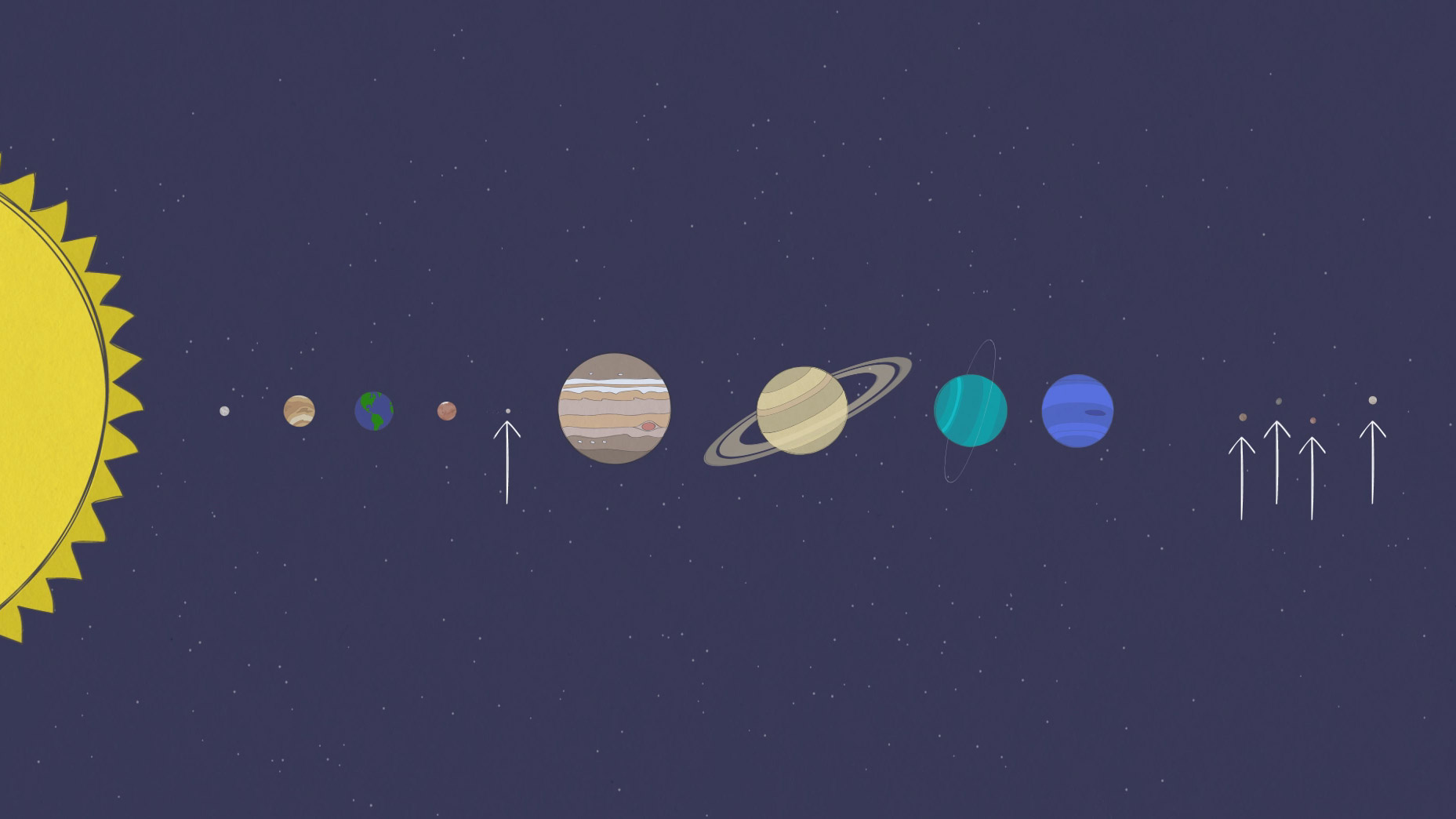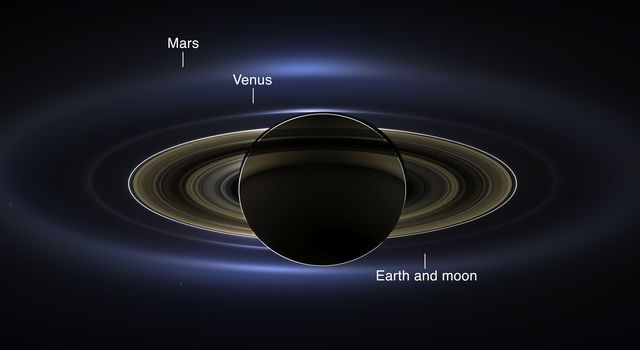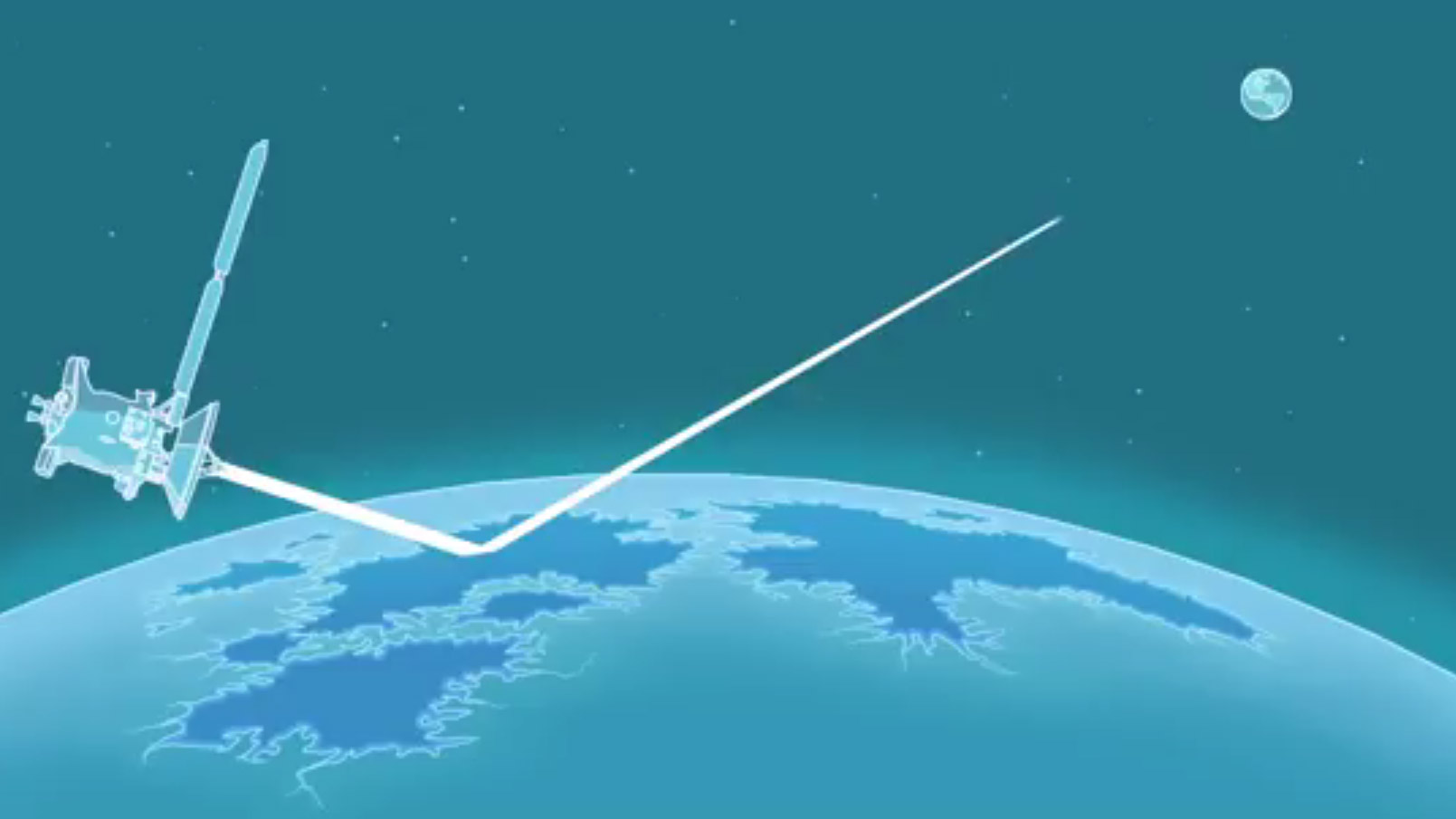Video
Bouncing Radio Waves Off Titan's Lakes
This activity is related to a Teachable Moment from Sept. 12, 2017. See "A Moment You Won't Want to Miss: Cassini's Daring Mission Finale Between the Rings and Saturn."
› Explore more on the Teachable Moments Blog
When NASA's Cassini spacecraft flies by Saturn's hazy moon Titan, it does more than take in the view. Using invisible radio waves, the spacecraft can actually "peer" through the moon's haze to reveal details about its nature and composition. Thanks to this process, known as a bistatic scattering experiment, scientists can learn more about places like Kraken Mare, the largest body of liquid on Titan, without ever touching down on the surface.
Video Transcript
Saturn's largest moon, Titan, is one of the most intriguing places in our Solar System.
It is the only moon in our Solar System that has clouds and a dense atmosphere -- and atmosphere so thick that it blocks our view of the surface.
As a result, we knew very little about Titan until July 2004, when NASA's Cassini spacecraft first entered orbit at Saturn.
Cassini is able to see through Titan's atmosphere using various instruments and techniques.
One such method is called a 'bistatic scattering experiment,' a technique that uses radio waves.
To conduct a bistatic experiment, you need the right observation geometry, a spacecraft radio transmitter and an antenna capable of collecting the signal once it reaches Earth, and, of course, a lot of math -- lots and lots of math.
During a bistatic experiment, radio waves are transmitted from Cassini to the surface of Titan. The surface then acts much like a mirror. When the waves hit the surface, they are reflected at various angles and some of them continue their journey toward Earth.
Despite traveling at the speed of light, it will take these radio waves more than an hour to reach Earth, which is on average almost a billion miles away from Titan.
The radio waves that are transmitted are in three different frequencies within the microwave part of the spectrum, and each reacts differently depending on the materials and topography they encounter at Titan.
Once they reach Earth, the radio waves are collected by one of the huge antennas around the globe that are part of NASA's Deep Space Network.
The signal received at Earth is then compared to the signal that was originally sent to Titan from Cassini. Once again, scientists use lots and lots of math to analyze the differences in these two signals, and, from this information, deduce what the surface of Titan is made of: rock, sand, liquid or even mud.
Though we cannot yet visit Titan ourselves, the science of radio waves allows us to explore this mysterious world.








